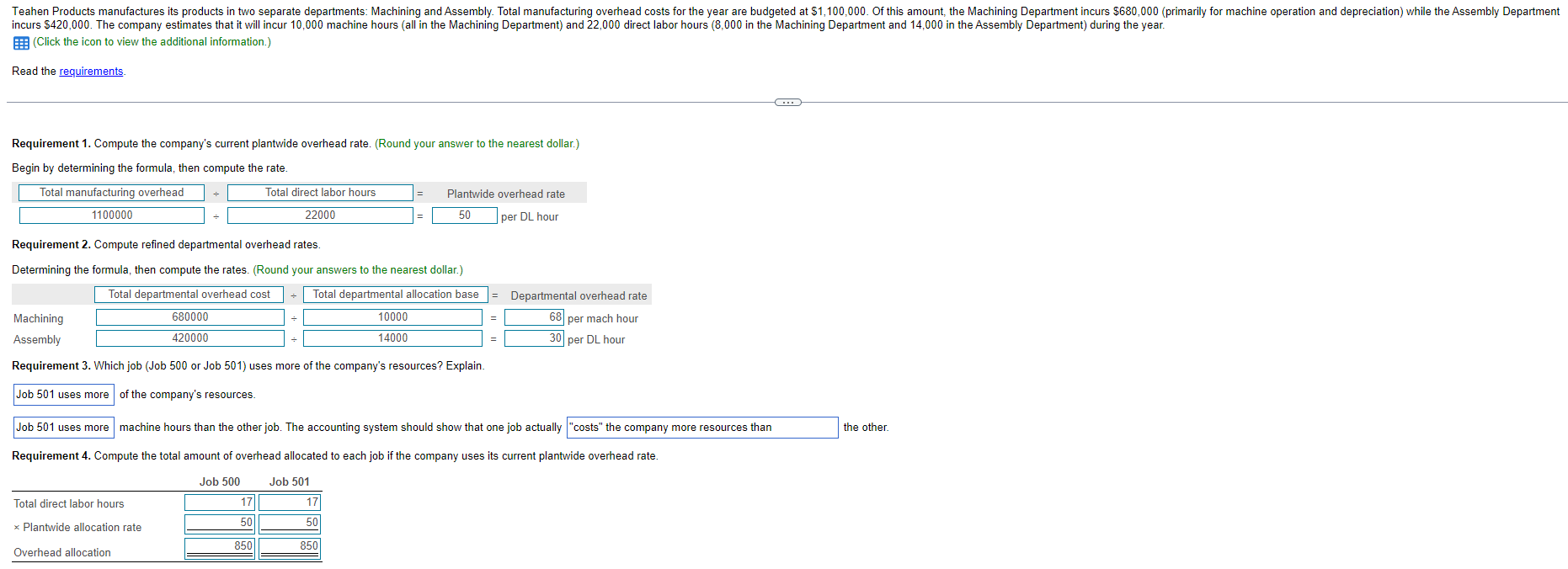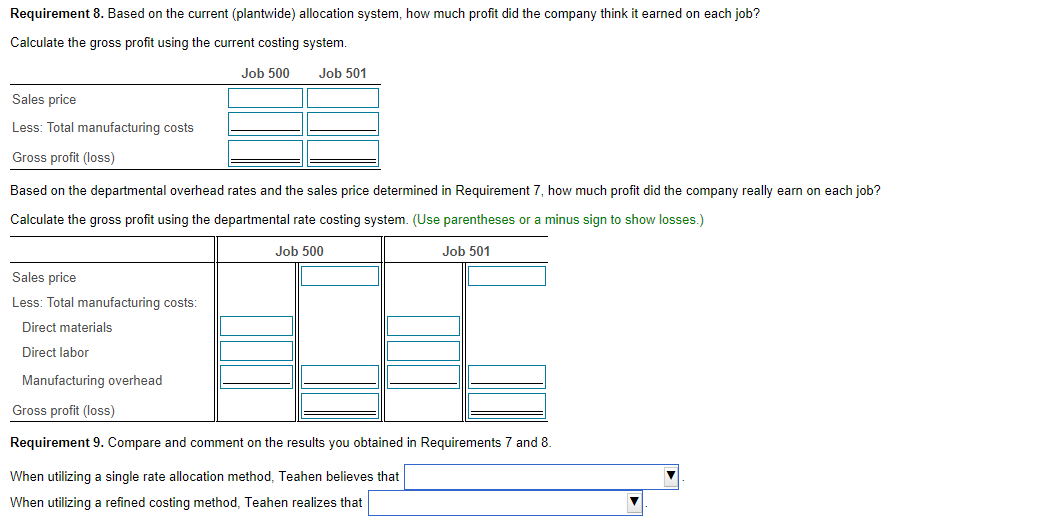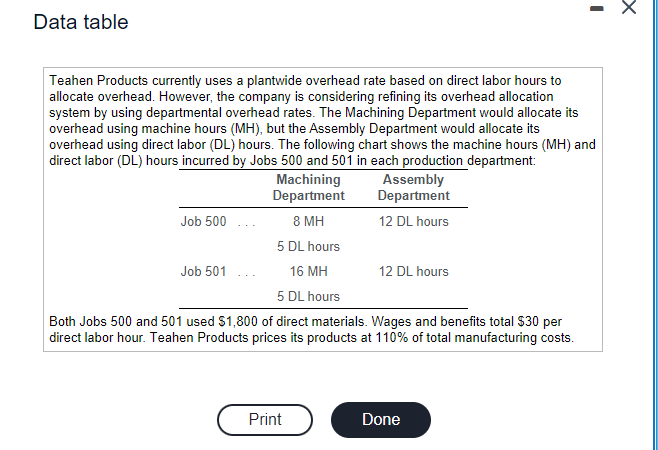



Teahen Products manufactures its products in two separate departments: Machining and Assembly. Total manufacturing overhead costs for the year are budgeted at $1,100,000. Of this amount, the Machining Department incurs $680,000 (primarily for machine operation and depreciation) while the Assembly Department incurs $420,000. The company estimates that it will incur 10,000 machine hours (all in the Machining Department) and 22,000 direct labor hours (8,000 in the Machining Department and 14,000 in the Assembly Department) during the year. Click the icon to view the additional information.) Read the requirements. GO Requirement 1. Compute the company's current plantwide overhead rate. (Round your answer to the nearest dollar.) Begin by determining the formula, then compute the rate. Total manufacturing overhead Total direct labor hours = Plantwide overhead rate 1100000 22000 50 per DL hour Requirement 2. Compute refined departmental overhead rates. Determining the formula, then compute the rates. (Round your answers to the nearest dollar.) Total departmental overhead cost Total departmental allocation base 680000 10000 Machining Assembly Departmental overhead rate 68 per mach hour 30 per DL hour 420000 14000 Requirement 3. Which job (Job 500 or Job 501) uses more of the company's resources? Explain. Job 501 uses more of the company's resources. Job 501 uses more machine hours than the other job. The accounting system should show that one job actually "costs" the company more resources than the other. Requirement 4. Compute the total amount of overhead allocated to each job if the company uses its current plantwide overhead rate. Total direct labor hours Job 500 17 50 Job 501 17 50 x Plantwide allocation rate 850 850 Overhead allocation Requirement 5. Compute the total amount of overhead allocated to each job if the company uses departmental overhead rates. Job 500 Job 501 Overhead allocation - Machining Department Overhead allocation - Assembly Department Total overhead allocation Requirement 6. Do both of the allocation systems accurately reflect the resources each job used? Explain. The single plantwide overhead rate assigned different amounts of overhead to both jobs. The departmental rates assign to Job 501 than Job 500 due to the V used. This seems Requirement 7. Compute the total manufacturing cost and sales price of each job using the company's current plantwide overhead rate. (Round amounts to the nearest dollar. Enter the percentage as a whole number.) Job 500 Job 501 Direct materials Direct labor Manufacturing overhead Total manufacturing costs Markup for pricing (%) Sales price Requirement 8. Based on the current (plantwide) allocation system, how much profit did the company think it earned on each job? Calculate the gross profit using the current costing system. Job 500 Job 501 Sales price Less: Total manufacturing costs Gross profit (loss) Based on the departmental overhead rates and the sales price determined in Requirement 7, how much profit did the company really earn on each job? Calculate the gross profit using the departmental rate costing system. (Use parentheses or a minus sign to show losses.) Job 500 Job 501 Sales price Less: Total manufacturing costs: Direct materials Direct labor Manufacturing overhead Gross profit (loss) Requirement 9. Compare and comment on the results you obtained in Requirements 7 and 8. When utilizing a single rate allocation method, Teahen believes that When utilizing a refined costing method, Teahen realizes that 1 Data table Teahen Products currently uses a plantwide overhead rate based on direct labor hours to allocate overhead. However, the company is considering refining its overhead allocation system by using departmental overhead rates. The Machining Department would allocate its overhead using machine hours (MH), but the Assembly Department would allocate its overhead using direct labor (DL) hours. The following chart shows the machine hours (MH) and direct labor (DL) hours incurred by Jobs 500 and 501 in each production department: Machining Assembly Department Department Job 500 8 MH 12 DL hours 5 DL hours Job 501 16 MH 12 DL hours 5 DL hours Both Jobs 500 and 501 used $1,800 of direct materials. Wages and benefits total $30 per direct labor hour. Teahen Products prices its products at 110% of total manufacturing costs. Print Done










